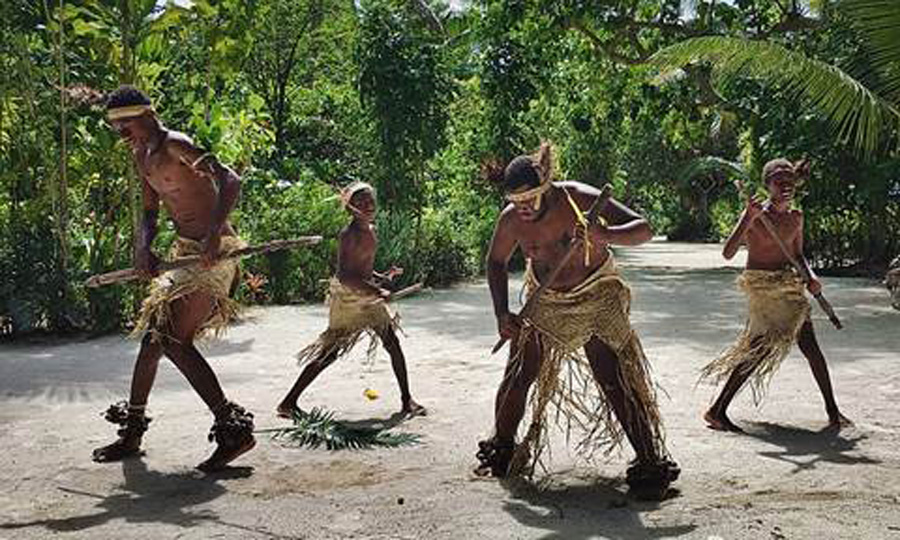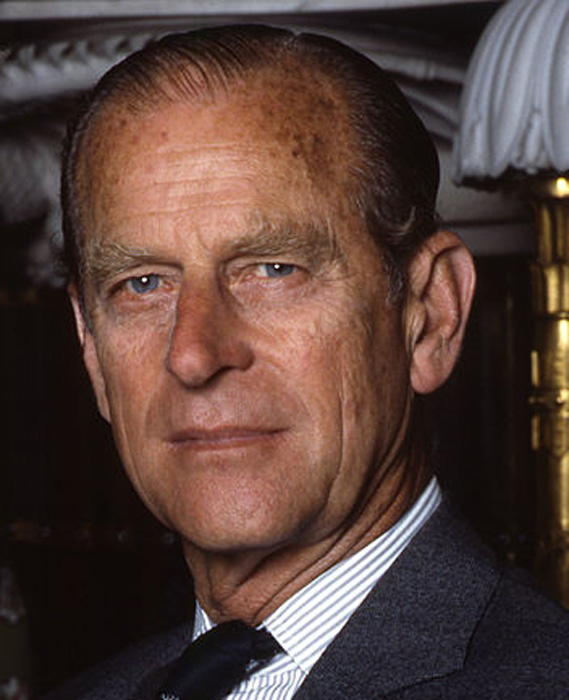Cargo cults, where a (typically Western) figure is worshipped by a less advanced society, are a well established phenomena. But while some have rational aspects to them – the hope that the figure will provide advanced goods in return for the worship – some are more unusual and exotic.
For more than half a century, the Prince Philip Movement flourished in the villages of Yaohnanen and Yakel, on the southern island region of Tanna in Vanuatu. The movement is one of several religious sects followed by the Kastom people in these villages.
The tribe of Yaohnanen believe that the Duke of Edinburgh or Prince Philip, who was the consort of Queen Elizabeth II, is divine. These villagers live in the jungles of Tanna and practice ancestral customs. In present times, the villagers still wear traditional dress but maintain a strong connection with society. They also live several kilometers away from the city, choosing semi-isolation from the modern world.

The villagers see Tanna as the world’s origin, and aim to promote peace, and here, Prince Philip played a crucial role. Over time, they came to believe that Prince Philip was just one of them who left the island in his original spiritual form, in order to make a strong marriage overseas.
By ruling the United Kingdom with the Queen, they believed he tried to bring the Vanuatu respect and peace to England as well as in other areas of the world. These people also believe that if he had succeeded then he may have returned to Tanna. One thing that stopped him was the white people’s stupidity, greed, jealousy, and fighting.
The Origins Of The Prince Philip Movement
Ancient Yaohnanen tales tell of a mountain spirit’s son who traveled overseas to a faraway land. There he got married to a powerful lady and was destined to eventually return to the villagers. He was often called the brother of John Frum, believed to be a WWII US serviceman who also inspired a cargo cult.
The Yaohnanen and Yakel region believe in Prince Philip’s divinity, as they saw the respect given to Queen Elizabeth II by local officials and assumed that her consort must be son to their legends. It is quite unclear when this belief arises, and the Prince Philip movement began. However, there are many theories behind it.

According to the anthropologist Kirk Huffman, the villagers saw the pictures on the walls of colonial outposts with the Queen during the time when Vanuatu was called New Hebrides, and was a colony administered by France and Britain. Another interpretation of the movement’s beginning is that it came out as a reaction to the presence of colonial rule where they associated with the person who sat with the Commonwealth’s ruler.
However, the experts believe that by the 1970s, the existence of the Prince Philip Movement was cemented by the royal couple’s visit in 1974 to the New Hebrides. The Duke was a highly visible dignitary for the visit, taking part in local kava-drinking rituals.
The Tribe And Prince Philip
Prince Philip maintained an interaction with the people of Vanuatu. He accepted their reverence, sent many photographs and letters of himself to the tribes, who also, in turn, provided him some traditional presents over the years. The Prince also signed on an official photograph of himself and sent it to the villagers.
One of the first gifts he received was the ceremonial club called nal-nal, used to kill pigs. It was gifted in a meeting in 1978 convened by villagers. Huffman, who attended the meeting, said that the British resident commissioner went there and presented the tribesman with photos of Prince Philip in return.
The people accepted the gifts in silence, and then a chief then presented the club to be taken to Prince Philip. They also insisted on proof that the Prince has received it. When the Duke received it, he posed for a picture holding the club. This picture was then sent back to the tribal people.
In 2007, many tribesmen got the chance to meet the Prince in person. They flew to the UK for a television series named “Meet the Natives” during which they had an off-screen meeting with Prince Philip at Windsor Castle. The people presented gifts and pressed him for when he planned on returning to his home in Tanna. He replied that when it turns warm, he would send them a message.
- Psychological Observations of Napoleon Bonaparte
- North Sentinel Island: Last Isolated Culture in the Andamans
After Prince Philip’s death in 2021, his eldest son Prince Charles has continued to keep the connection with the tribe. He also visited the islanders in 2018 and drank kava like his father. There he received a walking stick from the tribesmen on behalf of Prince Philip. The sect also celebrated the wedding of Meghan Markle and Prince Harry by holding a party where they feasted on pork and danced.
The Death Of Their God
Albi, the Chief of the village, told of how the sect heavily mourned the death of Prince Philip. Tribal leader Chief Yapa also sent his condolence to UK’s people and the Royal Family. The Union Flag hoisted at the half-mast on the nakamal grounds, the traditional gathering place for the islanders.

A formal period of mourning was declared, with the tribes gathering on 12 April 2021 to remember Prince Philip. There, people spoke about him and paid tribute to the Duke. For many weeks after that, the tribal people gathered periodically to perform rites for him as the descendant of the powerful spirit that resided on their mountains.
The villagers conducted ritualistic dance ceremonies, held a procession, and showed memorabilia of Prince Philip. The men also drank kava in honor of their departed god. The mourning period culminated with gatherings where the villagers ate a ceremonial meal together of pork, yams and kava.
Jack Malia, a local expert, said that even though Prince Philip died the villagers still have a strong connection with the Queen as the mother of the Royal Family. Many villagers believe that even if Duke’s body is resting, the soul will surely return to its home on the island of Tanna.
Huffman said that after their mourning period, the villagers would transfer their great respect to Prince Charles. Even if the Prince becomes the new incarnation of the villagers’ deity, Prince Philip will never be forgotten in the tribal people’s hearts.
Top Image: The Vanuatu of Tanna with pictures of their god. Source: Christopher Hogue Thompson / CC BY-SA 3.0.
By Bipin Dimri